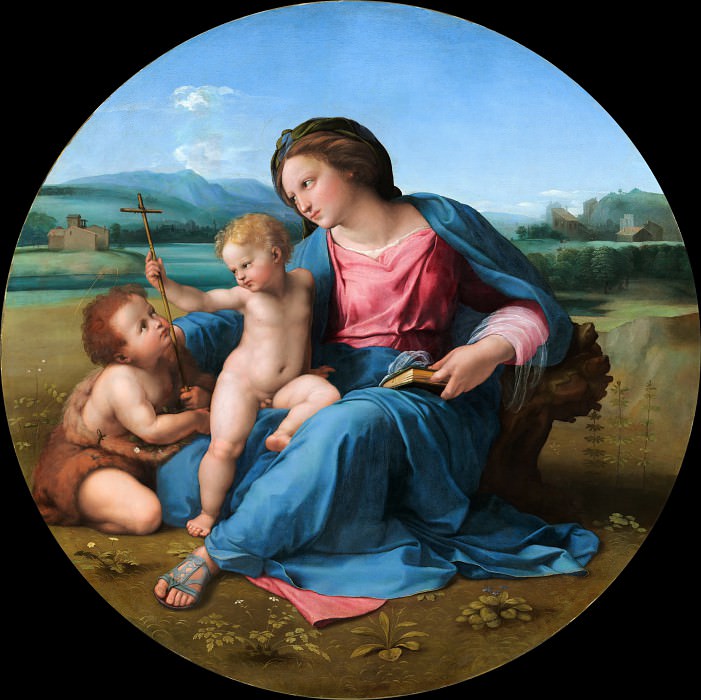The Alba Madonna Raphael (1483-1520)
Raphael – The Alba Madonna
Edit attribution
Download full size: 5201×5200 px (6,7 Mb)
Painter: Raphael
Location: National Gallery of Art, Washington.
Paintings depicting saints were always in vogue. It was a perennial success and many wealthy citizens of the Middle Ages were eager to have a portrait of the Madonna or Christ in their home. But there were also triple portraits. Raphael was the most refined painter of the Middle Ages and quite often fulfilled orders with images of saints. In fact, that’s how this painting came to be commissioned.
A description of Raphael Santi’s Madonna Alba
Paintings depicting saints were always in vogue. It was a perennial success and many wealthy citizens of the Middle Ages were eager to have a portrait of the Madonna or Christ in their home. But there were also triple portraits.
Raphael was the most refined painter of the Middle Ages and quite often fulfilled orders with images of saints. In fact, that’s how this painting came to be commissioned. It’s traditional: Mary, the mother of Christ, the child Christ and the child John the Baptist. Everything seems to be traditional, but not quite. The landscape is somewhat different and then the Madonna herself is stunning in her outward splendor and some kind of peacefulness. We can assume that she went out for a walk with the Child and met John, the future Baptist.
Who knows if such an encounter was real or a figment of the painters’ imagination. But the story lured many into its net. Raphael did not escape this. He had the Madonna in a blue chiton, holding a book and even sitting on something resembling an armchair. John joins them, and she sort of draws him to her, while Christ grasps the cross. The very cross with which he will be baptized and on which he will be nailed during his execution. What is this but a destiny from above?
All three of them understand this, so there is no anxiety. They understand that the inevitable cannot be avoided. It’s a stunning canvas, dominated by the color blue (the chiton and the sky, a bit of mountain). But the green is not far behind either, it is also present and gives us a wonderful soft gamut. But most importantly, all the characteristics of the future children are already given - the Baptist in a rough sheep’s skin, Christ, like all babies, is still naked, but this too for a reason - it means that his soul is pure. And here’s something else from symbolism-the clouds above the babies. That’s also for a reason. It means that the fate of these children is not cloudless.
Кому понравилось
Пожалуйста, подождите
На эту операцию может потребоваться несколько секунд.
Информация появится в новом окне,
если открытие новых окон не запрещено в настройках вашего браузера.
You need to login
Для работы с коллекциями – пожалуйста, войдите в аккаунт (open in new window).




















COMMENTS: 3 Ответы
Странно, что репродукции работ Рафаэля не висят повсеместно в учреждениях и торговых залах, почему человек не стремиться окружить себя прекрасным? Так ли уж много нужно для этого средств?
Koschey, прочитала, что именно эта работа выполнена в технике Unione, а чем она отличается от других?
интересная статья об Unione.
http://glennis.net/real/raphaels-unione/
я не очень разбираюсь в этом вопросе. вероятно рафаэль разработал эту технику на основе сфумато, совмещая ее с интенсивностью и яркостью цвета.
You cannot comment Why?
Perhaps it’s a painting of a woman holding a child and a monkey next to.